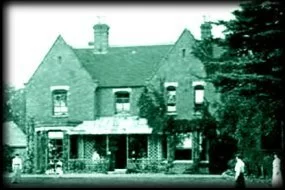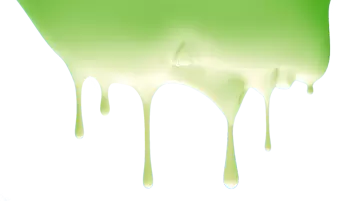by Walter Bissell
 The Borley Rectory was built in 1863 in Essex, United Kingdom by Rev. Henry Dawson Ellis Bull. Despite warnings, Bull constructed the Rectory on what was believed to be the site of a haunted monastery that existed here around 1362.
The Borley Rectory was built in 1863 in Essex, United Kingdom by Rev. Henry Dawson Ellis Bull. Despite warnings, Bull constructed the Rectory on what was believed to be the site of a haunted monastery that existed here around 1362.
According to local legend, “a monk from the monastery had a relationship with a nun from a nearby convent. After their affair was discovered, the monk was executed while the nun was bricked up alive in the walls of the convent.” It was reported that the nun’s ghost haunted the monastery as she looked for her deceased lover. It wasn’t long until the Borley Rectory had the same reputation. It soon became known as "the most haunted house in England."
There were reports of paranormal events at the rectory as early as 1863. Residents reported hearing footsteps within the house. In July 1900, daughters of the rector reported seeing what they thought was “the ghost of a nun from 40 yards distance near the house in twilight: they tried to talk to it, but it disappeared as they got nearer.” Mr. and Mrs. Edward Cooper, who lived in a cottage nearby, reportedly saw the ghost and also witnessed a phantom coach and horses.
When Henry Bull died in 1892 the duties at the rectory were taken over by his son, Rev. Harry Bull. Although he married In 1911 and was living in nearby Borley Place, it was not until 1920 that he moved into the rectory. During his seven year stay, there was very little unusual activity. On the 9th of June, 1927 Harry Bull died and the rectory became vacant for one year.
Reverend Smith and Harry Price
On October 2, 1928 the Reverend Guy Eric Smith and his wife moved into the rectory. Soon after, Mrs. Smith was cleaning out the basement when she found a brown paper package. Inside it was the skull of a young woman. From that day on, the family is said to have experienced a number of incidents including “the sounds of bells ringing, lights appearing in windows, windows shattering, unexplained footsteps, and their daughter was locked in a room with no key.” In addition, Mrs Smith saw the “phantom” horses and carriage.
The Smiths contacted the Daily Mirror, a local newspaper and told them about the strange phenomenon. The paper sent out a reporter who wrote a series of articles about the mysterious happenings. The paper also contacted Harry Price, a paranormal researcher, to make his first visit to the rectory. When Harry arrived, all hell seemed to break loose. According to Harry, objects such as stones, vases and other objects began flying. He reported that “spirit messages” were being tapped out from the frame of a mirror. Later, he would tell of ghost writing on the walls and, of course, the now famous levitating brick. “Strange lights, ghostly whispers; a headless man; a girl in white; the sounds of a phantom coach outside and apparitions of Henry Bull and the nun” were all part of Harry’s renowned investigation.
The Smiths Leave Borley Rectory
The Smiths left the rectory suddenly in September 1930, and the following month, Lionel Foyster and his wife Marianne moved in. Over the next five years, some two thousand incidents supposedly took place including “bell-ringing, stone and bottle-throwing and Marianne being thrown bodily from her bed.” Other phenomona was also reported, such as the ghostly wall-writing. The words “Marianne, help me, I cannot understand, tell me more,” appeared on the wall. (Decades later, it would be discovered that this writing actually matched Marianne's own penmanship, leading investigators to believe that Marianne, herself, wrote the messages.)
The Ghost Investigation Continues
In March 1938, Harry Price acquired the help of Helen Glanville, an English medium, who made contact with two spirits. The first was that of “a young nun who identified herself as Marie Lairre." She said she had been murdered on the site of Borley Rectory. Her answers were consistent with the local legend.” The second spirit to be contacted identified himself by the strange name of "Sunnex Amures." He claimed that he “would set fire to the rectory at nine o'clock that night." He also said that, at that time, "the bones of a murdered person would be revealed.” These predictions may have come true, but not that night. In February, 1939, the new and final owner of the rectory accidentally knocked over an oil lamp (so he claimed to his insurance company) while he was unpacking some boxes, and a fire ensued. The fire quickly spread, and Borley Rectory was severely damaged. While many watched the rectory burn, some said they saw the figure of the ghostly nun appear in the upstairs window.
After Harry Price's death in 1948, an investigation of his claims was made by the Society for Psychical Research. In 1956, in a report titled, The Haunting of Borley Rectory, the SPR concluded that “any evidence for a haunting was hopelessly confused by Harry Price's duplicity.” Subsequently “Robert Hastings, an SPR member, discussed several of the charges of duplicity and falsification of evidence made against Harry Price in a paper to the SPR called, An Examination of the 'Borley Report.' He was unable to rebut the claims of paranormal activity convincingly. Hastings's report was never published and is often overlooked by investigators.
Final Thoughts to Consider About the Story of Borley
Due to what may have been several motives of the different people who claimed Borley Rectory was haunted, we cannot be sure it was the most haunted house in England. Some of the characters associated with its history might have claimed ghosts haunted the house for vengeance, monetary gain, or fame. This list of questionable people included Harry Price himself. And the amount of public interest in Borley Rectory, when it still existed, created constant visits from all sorts of people, including vagrants and thrill seekers, who were caught on-site. The building also had hidden entrances that made it nearly impossible for it to be sealed off during the investigations of Harry Price. All of this may suggest that some of the phenomena might not have been paranormal at all. Later, the infamous floating (or flying brick) photograph would be proven to be a fake. A witness came forward after Harry Price's death and confirmed Price had created the story about the brick after three of them witnessed the man toss it while working. (Some say there is a photo showing the man tossing the brick; we have examined the photo suggested as proof, by some, and do not see a man tossing it. In fact, this same photo appears in Harry Price's book, The Most Haunted House in England, and he would not have included it had it been his undoing. Whether or not another photograph exists, we cannot say.)
Is Borley Rectory's haunted reputation fact or fiction? You be the judge.
Ghost Pictures Taken at the Borley Rectory:
Borley Rectory Ghost Pictures
Borley Rectory Video Ghost Story

